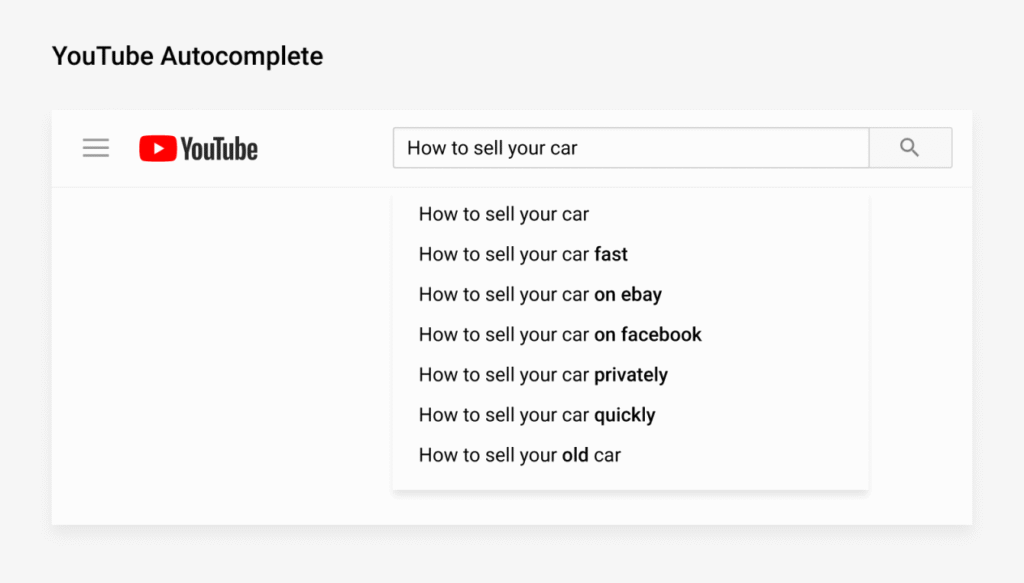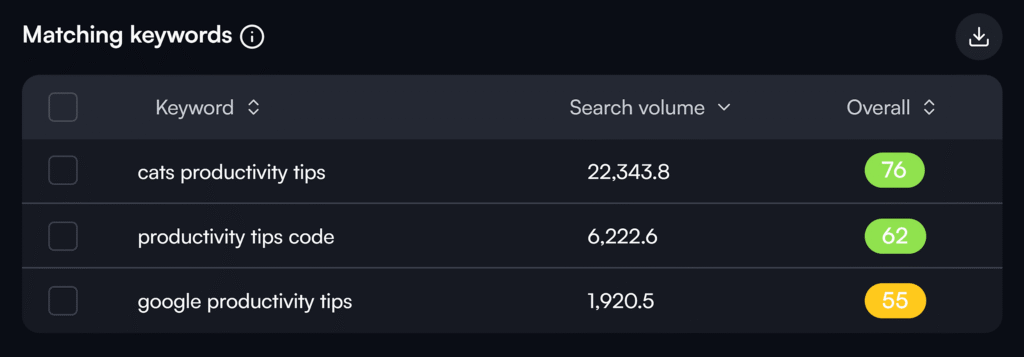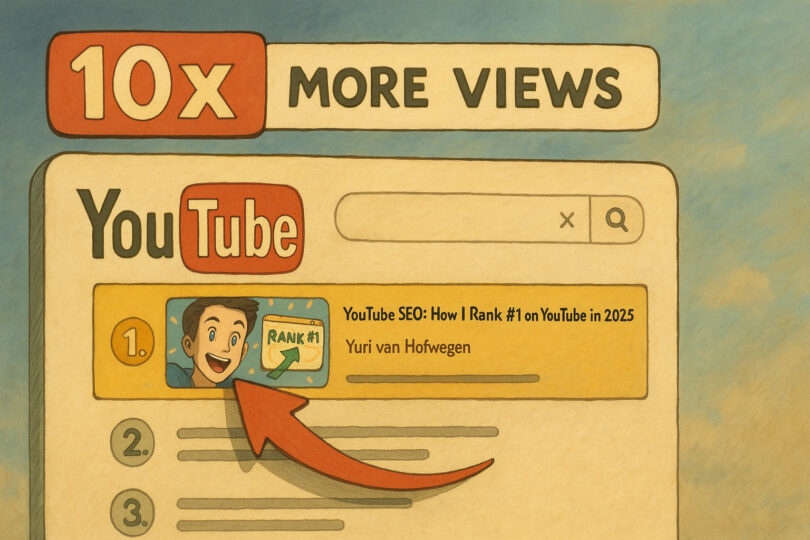You’ve poured hours into your YouTube video—scripting, filming, editing—only to watch it vanish into obscurity with just a handful of views. Sound familiar? You’re not alone. The truth is, most creators are missing one critical piece of the puzzle: YouTube SEO keyword research . Without it, even the best content gets buried. But what if I told you there’s a proven way to make your videos show up at the top of YouTube search results—even with zero subscribers?
Why This Article Matters
If you want your YouTube channel to grow, ranking on YouTube isn’t optional—it’s essential. And the only sustainable way to get there is by mastering YouTube SEO keyword research . In this article, we’ll walk through everything you need to know to find high-potential keywords, analyze competition, and optimize your videos to rank #1. Whether you’re a beginner or an established creator, this guide will give you actionable steps to boost your visibility and grow your audience.
What Is YouTube SEO Keyword Research?
Before diving into the “how,” let’s understand the “what.” YouTube SEO keyword research is the process of identifying what people are searching for on YouTube and finding opportunities where your video can rank highly for those terms.
It’s not just about guessing what people might search for—it’s about using real data to discover what they are searching for right now. When done correctly, this strategy gives your video a fighting chance to appear in YouTube search results, driving consistent organic traffic for months (or even years) after upload.
Why Keyword Research Is the Foundation of YouTube SEO
Let’s be honest: Uploading random videos won’t cut it anymore. YouTube has evolved, and so have its algorithms. Ranking in search isn’t about luck or guesswork—it’s about strategy. That’s why keyword research for YouTube SEO is non-negotiable.
Here’s why:
- Targeted Traffic : Ranking for the right keywords brings viewers who are actively looking for your content.
- Long-Term Growth : Videos that rank well continue to bring in views long after upload.
- Competitive Edge : Even small channels can outrank big YouTubers if they use better SEO practices.
- Audience Building : Ranking for niche-specific keywords helps you attract a loyal, engaged audience.
Step-by-Step YouTube SEO Keyword Research Process
Now that we’ve covered the importance, let’s break down the entire process from start to finish.
Step 1: Use YouTube’s Search Bar to Find Real-Time Keywords

The easiest and most underrated tool for YouTube SEO keyword research is YouTube itself. Start typing a topic into the search bar, and you’ll instantly see what people are searching for.
For example, if you type “how to,” YouTube will auto-suggest popular searches like:
- How to edit videos
- How to grow on YouTube
- How to monetize YouTube
These suggestions are based on actual user behavior, making them gold when it comes to finding relevant YouTube SEO keywords .
Pro Tip: Use the Alphabet Method
To dig deeper, try adding each letter of the alphabet after your base keyword. For instance:
- How to a…
- How to b…
- How to c…
This simple trick reveals more specific queries users are entering, giving you fresh ideas for your next video.
Step 2: Leverage Keyword Research Tools Like VidIQ

While manual methods work, tools like VidIQ streamline the process and provide valuable insights like search volume, competition level, and historical performance.
Here’s how to use VidIQ effectively:
- Search for Your Niche Keyword : Type in a broad term like “social media” or “fitness.”
- Click Matching Terms : See all variations of that keyword currently searched on YouTube.
- Check Related Keywords : Discover semantically related topics that could also perform well.
- Analyze Historical Data : Look at how top-ranking videos are performing over time.
By combining these features, you’ll uncover hidden opportunities others overlook.
Step 3: Analyze Top-Ranking Videos

Once you’ve shortlisted a few potential keywords, it’s time to vet them. Here’s how:
- Search the Keyword on YouTube
- Open the Top 3–5 Results in New Tabs
- Use VidIQ’s Historical Data Feature to check:
- Total views
- Views per hour
- Subscriber count of the channel
- Whether the exact keyword appears in the title
If the top-ranking videos aren’t getting many views per hour or don’t include your exact keyword in the title—you’ve found a golden opportunity.
Step 4: Evaluate Competition and Relevance

Ranking doesn’t always depend on how many subscribers a channel has—it often boils down to relevance. If none of the top videos include your exact keyword in the title, you have a clear path to outrank them simply by optimizing yours better.
Ask yourself:
- Are the top-ranking videos actually about my keyword?
- Do they address the viewer’s intent?
- Can I create something better?
Your goal isn’t just to rank—you want to stay ranked. That means offering superior value to viewers.
Step 5: Create Better Content Than the Current Rankings

Just because you found a low-competition keyword doesn’t mean you can skimp on quality. Your video needs to deliver exactly what viewers expect—and then some.
Here’s how to outperform the current rankings:
- Read Comments on top videos to find gaps or unanswered questions.
- Use AI Tools like ChatGPT for deep research into what viewers really want.
- Add Unique Value by including personal experience, case studies, or advanced tips.
Remember: YouTube rewards videos that keep viewers watching. So, make sure your content is engaging, informative, and easy to follow.
Optimizing Your Video for YouTube SEO
Once you’ve created your content, it’s time to fine-tune every detail for maximum visibility.
Title Optimization: Include Your Exact Keyword
Your video title should clearly reflect what someone would search for. Always include your main keyword near the beginning of the title for maximum impact.
Example:
- ❌ “Social Media Tips Using AI”
- ✅ “Social Media Marketing Using AI – Full Tutorial for Beginners”
The second option includes the full keyword, making it more likely to rank and easier for viewers to identify.
Description Writing: Be Natural but Strategic
Start your description by naturally incorporating your main keyword. Then, sprinkle in related keywords and phrases from VidIQ’s “related keywords” section.
Avoid keyword stuffing—write for humans first, search engines second.
Example:
In this social media marketing tutorial, I’ll show you how to do social media marketing using AI. With all these new AI tools being released, you might feel overwhelmed and wonder, “Hey, Yuri, what are the best AI tools for digital marketing these days?” Well, don’t worry—I got you. Because for my social media marketing, I use [tool name], [tool name], and [tool name]…
This approach integrates keywords while still sounding natural and informative.
Thumbnail Design: Make It Clickable
A great thumbnail works hand-in-hand with your title to tell a story. Make sure it:
- Matches the tone of your video
- Is readable on mobile devices
- Stands out from other thumbnails
Tools like ThumbsUp.tv help you preview how your title and thumbnail look across different screens.
Tags: Keep It Simple
Contrary to outdated advice, tags play a minimal role in YouTube SEO. However, they can help in edge cases where your keyword is commonly misspelled.
Use a site like RapidTags.io to generate relevant tags quickly:
- Enter your keyword
- Click Generate
- Copy and paste into your video settings
That’s all you need—no need to spend hours here.
Bonus Strategy: Build a Loyal Audience with Viewer Avatar Targeting
Ranking #1 is great—but if your audience doesn’t stick around, your growth will plateau. That’s where viewer avatar targeting comes in.
Instead of chasing any keyword that pops up, focus on ones that align with your ideal viewer’s interests, pain points, and goals.
Here’s how to build your viewer avatar:
- Identify your target demographic (age, gender, location)
- Understand their biggest challenges
- Align your content to solve those problems
- Track which videos retain viewers the longest
By consistently creating content tailored to your ideal audience, you’ll build a loyal fanbase that keeps coming back for more.
Final Thoughts: Master YouTube SEO Keyword Research to Dominate Search
If you want your videos to rank and grow your channel sustainably, YouTube SEO keyword research is your secret weapon. It’s not about shortcuts or hacks—it’s about understanding what viewers are searching for and giving it to them better than anyone else.
From using YouTube’s search bar to leveraging tools like VidIQ, analyzing top videos, and optimizing every detail of your upload—you now have the roadmap to rank #1.
So, take action today. Pick one keyword, follow this guide step-by-step, and watch your video climb the search results.
Frequently Asked Questions (FAQ)
Q: What is YouTube SEO keyword research?
A: It’s the process of identifying what people are searching for on YouTube and finding opportunities where your video can rank highly.
Q: How do I find good keywords for YouTube SEO?
A: Use YouTube’s search bar, tools like VidIQ, and analyze top-ranking videos for untapped opportunities.
Q: Does YouTube SEO still work in 2025?
A: Absolutely! While YouTube evolves, SEO remains the most reliable way to grow organically.
Q: How often should I do keyword research?
A: At least once a month to stay ahead of trends and competition.
Q: Can small channels rank for competitive keywords?
A: Yes—if the top-ranking videos aren’t optimized properly, you can outrank them with better SEO and content.
Ready to Rank #1?
Don’t wait for YouTube to magically promote your video. Take control of your growth with YouTube SEO keyword research and start showing up where your audience is searching.
If you’re ready to dive deeper, I’ve created a free mini-course on building your perfect viewer avatar—exclusively for readers who sign up for VidIQ through my link.
And remember: Every #1 ranking starts with one well-researched keyword. Choose wisely, optimize strategically, and watch your views soar.








Leave a Comment